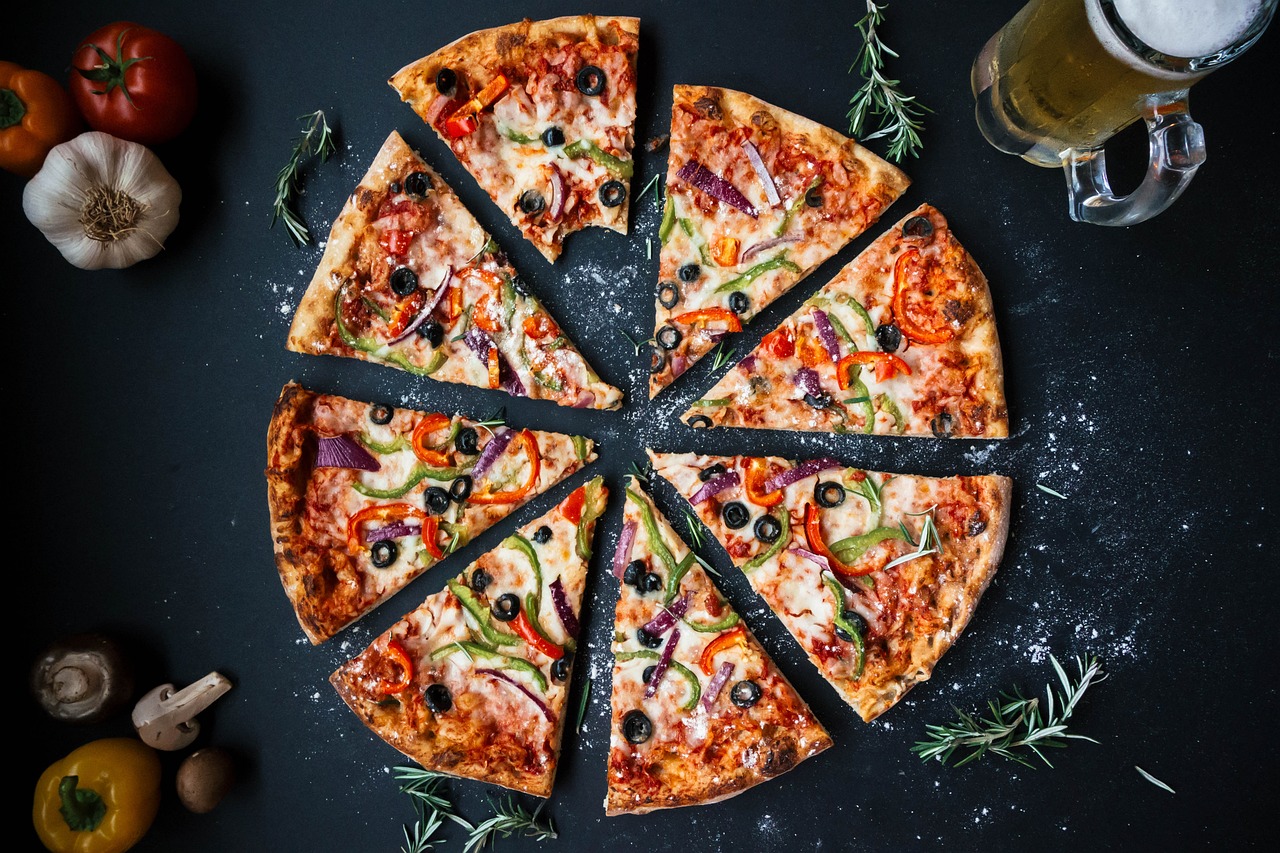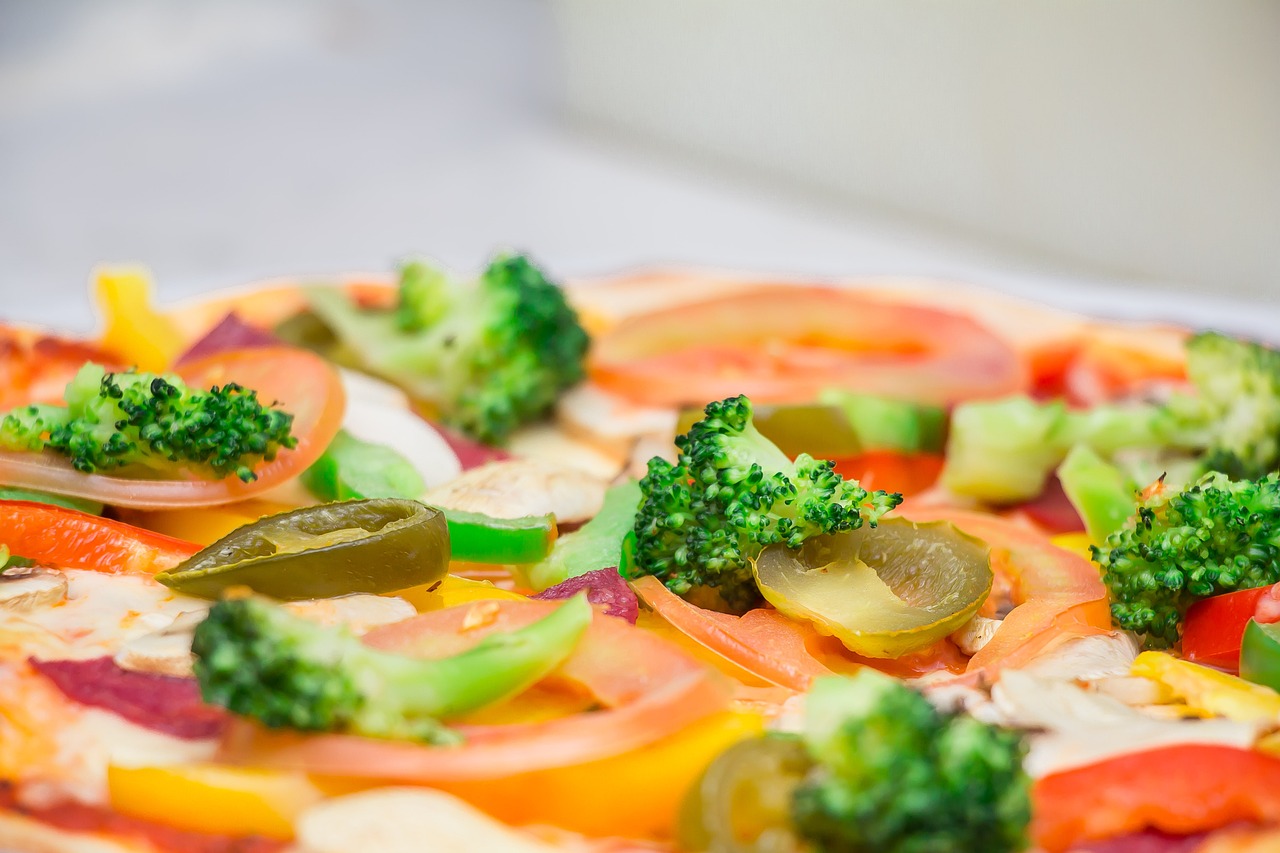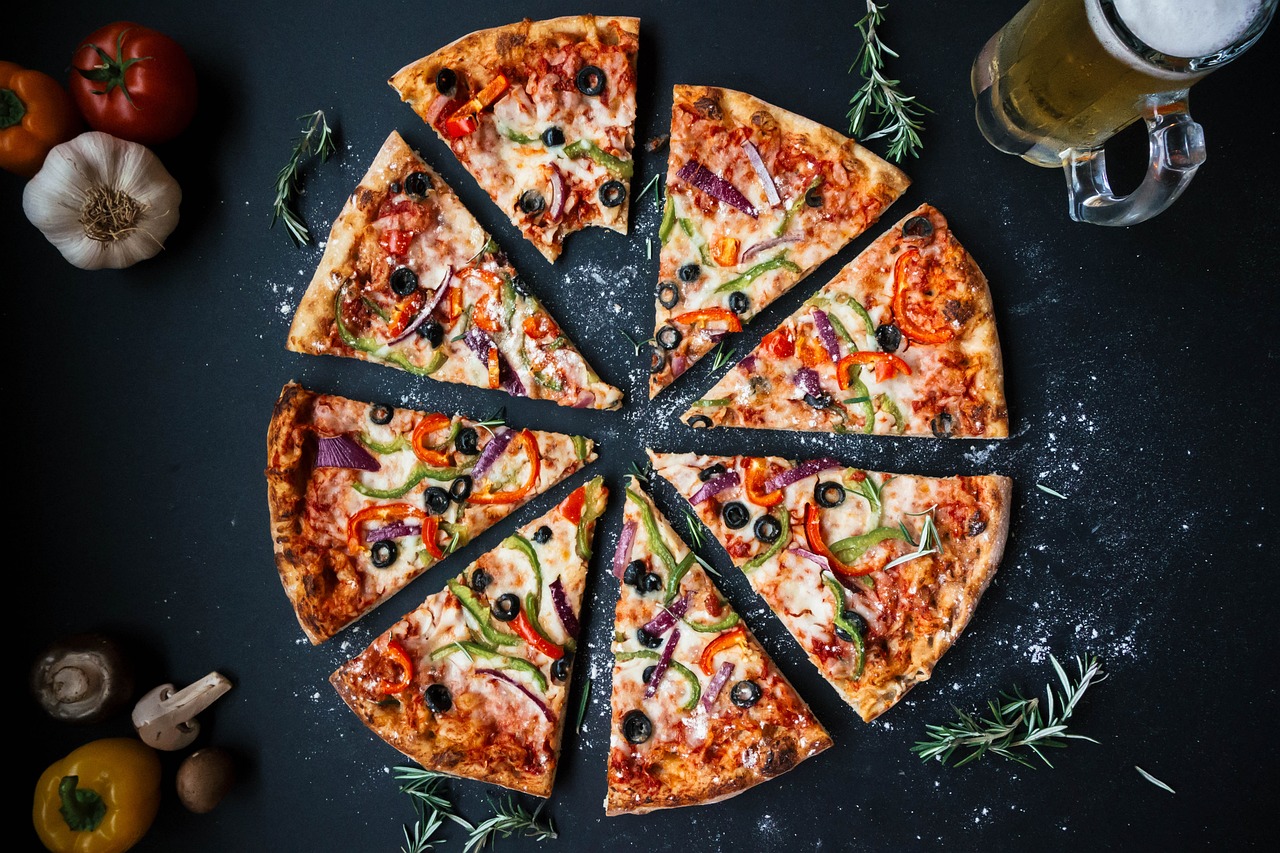Indulge in the flavorful world of gluten-free pizza with Tastepan’s collection of homemade pie recipes. Dive into a culinary adventure that celebrates both health and taste, as we explore the art of creating delicious gluten-free pizzas. With our expert tips and guidance, you can prioritize your well-being without sacrificing flavor. Discover the joy of nourishing your body with wholesome ingredients, as we redefine what it means to enjoy a tasty and nutritious pizza. Get ready to embark on a delicious journey that will leave you craving more of these homemade gluten-free pies.

Choosing the Right Gluten-Free Flour
If you’re embarking on a gluten-free pizza-making journey, it’s crucial to understand the different types of gluten-free flour. The key to a successful gluten-free crust lies in selecting the right flour blend that mimics the texture and taste of traditional pizza dough. Popular options include rice flour, almond flour, tapioca flour, and potato flour. Each type of flour brings its own unique properties to the mix, so it’s essential to experiment and find the combination that works best for you.
Understanding different types of gluten-free flour
Rice flour is a commonly used gluten-free flour that provides a neutral taste and a light texture to your pizza crust. Almond flour, on the other hand, adds a delightful nutty flavor and a slightly denser texture. Tapioca flour is often used as a binder and helps create a chewier texture. Potato flour contributes to a soft and fluffy crust. By combining these flours, you can achieve a balance of flavor, texture, and consistency in your gluten-free pizza.
Combining different flours for the best results
To create the perfect gluten-free pizza crust, it’s often necessary to combine multiple flours. This allows you to harness the benefits of each flour while minimizing their individual drawbacks. Experiment with different ratios of rice flour, almond flour, tapioca flour, and potato flour to find the ideal blend for your taste preferences. Keep in mind that the combination may vary depending on the recipe and the desired outcome, so don’t be afraid to get creative and tailor the flour blend to your liking.
Tips for measuring and substituting gluten-free flour
When working with gluten-free flours, it’s crucial to measure them accurately to achieve consistent results. Unlike wheat flour, gluten-free flours have different densities, so a precise measurement is essential. Use a kitchen scale to weigh the flours rather than relying solely on volume measurements. Additionally, if you need to substitute a gluten-containing flour with a gluten-free alternative in a recipe, be aware that the texture and taste may differ. It may take some trial and error to find the perfect substitute, but don’t be discouraged. Embrace the opportunity to experiment and discover new flavors and textures in your gluten-free pizza crust.
Creating the Perfect Gluten-Free Pizza Crust
Now that you have a good understanding of gluten-free flour, let’s dive into the importance of a good gluten-free pizza crust. A successful gluten-free pizza crust should be crispy on the outside, yet light and airy on the inside. Achieving this perfect balance may seem daunting, but fear not – we’re here to guide you through the key ingredients and different methods that will help you create a stellar gluten-free pizza crust.
The importance of a good gluten-free pizza crust
The crust is the foundation of any pizza, and a gluten-free crust is no exception. A good gluten-free pizza crust should not only taste delicious but also have a satisfying texture that holds up well to toppings. It should be able to set the stage for a flavorful and enjoyable pizza-eating experience. With the right blend of ingredients and cooking techniques, you can turn your gluten-free crust into a masterpiece.
Key ingredients for a successful crust
To achieve a successful gluten-free pizza crust, you’ll need a combination of gluten-free flours, such as rice flour, almond flour, tapioca flour, and potato flour, as mentioned earlier. Additionally, incorporating xanthan gum or guar gum into your dough can help improve the texture and binding properties of the crust. Other essential ingredients include yeast, which adds that desirable rise, and a touch of sugar to activate the yeast. Don’t forget to bring in some salt and olive oil to enhance the flavors of your crust.
Different methods for making gluten-free pizza dough
There are several methods you can explore when making gluten-free pizza dough. One common approach involves mixing the dry ingredients together, activating the yeast, and gradually incorporating the wet ingredients. Another popular method is using a gluten-free pizza mix, which simplifies the process and provides a convenient option for those new to gluten-free baking. Whichever method you choose, be sure to follow the instructions carefully and allow the dough to rise adequately for the best results.

Toppings and Sauce Ideas
Now that you have your gluten-free pizza crust ready to go, it’s time to get creative with your toppings and sauce choices. While traditional pizza toppings like pepperoni and mozzarella can still be enjoyed on a gluten-free pizza, don’t be afraid to experiment with unique and exciting combinations to elevate your homemade pies.
Classic and unique pizza topping combinations
Classic pizza toppings like mushrooms, bell peppers, onions, and olives are all gluten-free and provide delicious flavors and textures to your pizza. If you’re feeling adventurous, consider incorporating unique toppings like artichoke hearts, sun-dried tomatoes, fresh basil, or even thinly sliced apples. The possibilities are endless when it comes to creating unique flavor profiles on your gluten-free pizza.
Homemade gluten-free pizza sauce recipes
A homemade gluten-free pizza sauce can take your pizza to the next level. Start with a base of tomato sauce or crushed tomatoes and add your favorite herbs and spices. Consider using a combination of dried oregano, basil, garlic powder, and a pinch of red pepper flakes for a classic Italian flavor. If you prefer a sweeter sauce, add a touch of honey or maple syrup to enhance the natural sweetness of the tomatoes. Don’t be afraid to experiment with different ingredients and ratios until you find the perfect sauce for your taste buds.
Using fresh ingredients for maximum flavor
No matter which toppings or sauce you choose, using fresh, high-quality ingredients will elevate the flavor of your gluten-free pizza. Opt for fresh vegetables, herbs, and spices whenever possible. The vibrant colors and robust flavors will add a burst of freshness to your pizza. Don’t be afraid to visit your local farmers market or grow your own herbs to ensure the freshest ingredients possible. Your taste buds will thank you!
Adding Flavor with Herbs and Spices
Taking your gluten-free pizza to the next level involves more than just toppings and sauce. Herbs and spices play a crucial role in enhancing the overall taste and aroma of your pizza. By incorporating the right combination of flavorful herbs and spices, you can create a gluten-free pizza that is bursting with deliciousness.
Common herbs and spices used in gluten-free pizza
When it comes to gluten-free pizza, some common herbs and spices shine brighter than others. Basil, oregano, and thyme are classic Italian herbs that bring a lovely aroma and freshness to your pizza. Garlic, whether in powdered or minced form, adds that essential savoury flavor. Red pepper flakes or chili powder can lend a pleasant kick to your pizza if you enjoy a bit of heat. And let’s not forget about the versatility of black pepper, rosemary, and parsley – they can elevate your gluten-free pizza to a whole new level.
Enhancing the taste of your pizza with herbs
The role of herbs in enhancing the taste of your gluten-free pizza cannot be overstated. Their unique flavors and aromas can transform an ordinary pizza into a culinary masterpiece. Consider layering fresh basil leaves on top of your pizza after it comes out of the oven for an instant burst of freshness. Alternatively, infuse olive oil with herbs like rosemary, thyme, or garlic and drizzle it over your pizza just before serving. These little touches can make a world of difference in the overall taste experience.
Experimenting with different spice blends
Don’t be afraid to experiment with different spice blends to find your perfect flavor profile. Mix and match different herbs and spices to create a unique blend that complements your toppings and sauce. Try combining basil, oregano, garlic, and red pepper flakes for a classic Italian taste. Or for a Mexican flair, mix chili powder, cumin, smoked paprika, and a dash of cinnamon. The beauty of gluten-free pizza is that you have the freedom to explore and create bold and exciting flavor combinations.

Cheese and Dairy-Free Alternatives
If you follow a dairy-free diet or have lactose intolerance, fear not – there are plenty of delicious and meltable cheese alternatives available. These alternatives can be used to create a cheesy texture and add rich flavors to your gluten-free pizza.
Exploring dairy-free cheese options
Dairy-free cheese options have come a long way in recent years. Whether you’re looking for a mozzarella-style cheese, a creamy ricotta substitute, or a tangy vegan parmesan, you can find a variety of dairy-free alternatives at your local grocery store or specialty food shop. These cheeses are typically made from plant-based ingredients such as nuts, soy, or tapioca, and they can provide a similar texture and taste to traditional dairy cheese. Experiment with different brands and types to find the ones you enjoy the most.
Non-dairy alternatives for creamy pizza toppings
Beyond cheese alternatives, there are several non-dairy options you can consider for creamy pizza toppings. Cashew cream or tofu-based sauces can add a luscious and creamy element to your pizza without the need for dairy. These alternatives can be seasoned with herbs, spices, or nutritional yeast to give them a cheesy flavor. Don’t be afraid to get creative and try different combinations until you find the perfect creamy topping for your gluten-free pizza.
How to achieve a cheesy texture without dairy
If you prefer not to use dairy or dairy-free alternatives, there are still ways to achieve a cheesy texture on your gluten-free pizza. Nutritional yeast, for example, can provide a cheesy and nutty flavor while adding a sprinkle of nutritional value. Another option is to use a dairy-free pesto sauce as a base, which combines the creaminess of nuts or seeds with the rich flavors of herbs and garlic. Don’t be afraid to think outside the box and experiment with different ingredients and techniques to achieve the desired cheesy texture without dairy.
Cooking Methods and Techniques
Now that you’ve mastered the art of gluten-free pizza dough and the toppings, it’s time to discuss the various cooking methods and techniques that can take your pizza to the next level. The cooking method can greatly impact the texture, flavor, and overall success of your gluten-free pizza.
Choosing the right cooking method for your gluten-free pizza
The cooking method you choose for your gluten-free pizza largely depends on your personal preference and the equipment you have available. The most common methods for baking gluten-free pizza include using a conventional oven, a pizza stone, or a pizza oven. Each method comes with its own benefits and challenges, so it’s worth considering your desired outcome and the resources at hand.
Tips for achieving a crispy crust
One of the challenges of gluten-free pizza is achieving a crispy crust without it becoming dry or tough. To achieve a crispy crust, preheating your oven or pizza stone is crucial. The high initial heat helps create a hot environment that allows the crust to crisp up quickly. Additionally, rolling out your pizza dough thinly can help ensure that it cooks evenly and becomes crispy. If you prefer a thicker crust, consider par-baking it for a few minutes before adding the toppings to prevent a soggy crust.
Alternative cooking techniques for unique results
If you’re feeling adventurous, there are alternative cooking techniques you can explore to create unique and exciting gluten-free pizza variations. Grilling your pizza can add a delightful smoky flavor and charred marks to the crust. Simply preheat your grill to high heat, brush the dough with olive oil, and grill it for a few minutes on each side before adding the toppings. Another unconventional method is using a cast-iron skillet or a broiler to cook your pizza. These techniques can produce a slightly different texture and flavor profile, allowing you to expand your gluten-free pizza repertoire.
Serving and Presentation Tips
Once you’ve perfected your gluten-free pizza, it’s time to think about how to present it in an appealing and visually stunning way. After all, we eat with our eyes first, and a well-presented pizza can elevate the dining experience to a whole new level.
Creative ways to present your gluten-free pizza
There are countless creative ways to present your gluten-free pizza and make it visually appealing. Consider cutting your pizza into unique shapes, such as squares or triangles, to add visual interest. Alternatively, you can experiment with different pizza sizes and serving styles. Miniature gluten-free pizza sliders or individual-sized pizza cups can make for a fun and interactive dining experience.
Garnishing and decorating your pizza for a stunning presentation
Garnishing and decorating your gluten-free pizza can take it from ordinary to extraordinary. Sprinkle fresh herbs like basil or parsley over the top of your pizza for a burst of color. Top your pizza with edible flowers or microgreens to add an elegant and visually appealing touch. Don’t forget to drizzle your pizza with a swirl of flavored olive oil or balsamic glaze to enhance both the taste and presentation.
Serving and pairing suggestions for the best dining experience
To create the ultimate gluten-free pizza dining experience, consider serving your pizza with complementary side dishes. A refreshing salad with a tangy vinaigrette or a bowl of homemade soup can perfectly balance the flavors and textures of your pizza. Additionally, offering a variety of dips or flavored oils for dipping the crusts can add a touch of indulgence. Pair your gluten-free pizza with a glass of crisp white wine, a refreshing craft beer, or a mocktail for a complete and satisfying meal.
Perfecting the Art of Pizza Making
The art of gluten-free pizza making, like any culinary skill, requires practice, patience, and a willingness to learn from failed attempts. Don’t expect to achieve perfection on your first try, but rather embrace the journey as an opportunity for growth and improvement.
Practicing patience and persistence in gluten-free pizza making
When it comes to gluten-free pizza making, patience is key. Gluten-free dough may require more time to rise or develop its flavors compared to traditional dough. Avoid rushing the process and give your dough the time it needs. Be persistent and keep practicing until you achieve the desired results. Each pizza you make is an opportunity to learn and refine your skills.
Learning from failed attempts and making improvements
Don’t be discouraged by failed attempts. Even professional chefs encounter setbacks in their culinary journeys. Use any failed pizzas as an opportunity to analyze what went wrong and make improvements. Did the crust turn out too dry? Was the dough too dense? Reflect on the process, try different techniques or ingredients, and learn from your mistakes. With each adjustment, you’ll get closer to perfecting your gluten-free pizza.
Taking your pizza-making skills to the next level
Once you’ve mastered the basics of gluten-free pizza making, it’s time to take your skills to the next level. Experiment with different dough hydration levels, fermentation times, or even incorporate unique ingredients like flaxseed or nutritional yeast into your dough. Challenge yourself to create new flavor combinations and push the boundaries of what gluten-free pizza can be. The possibilities are endless, and the rewards are delicious.
Gluten-Free Pizza Beyond the Traditional
While traditional pizza flavors are undeniably delicious, don’t be afraid to explore international flavors and pizza variations when crafting your gluten-free masterpieces. Gluten-free pizza opens up a world of opportunities to incorporate unique ingredients and flavors that will surprise and delight your taste buds.
Exploring international flavors and pizza variations
Why limit yourself to traditional Italian flavors when you can explore a world of international cuisines with your gluten-free pizza? Consider incorporating Mexican-inspired flavors like chipotle-infused black beans, avocado, and fresh salsa. Or venture into the Mediterranean with toppings like feta cheese, kalamata olives, and roasted red peppers. Thai-inspired pizzas with peanut sauce, chicken, and fresh cilantro can take your taste buds on a flavor adventure.
Incorporating unique ingredients into your gluten-free pizza
When it comes to gluten-free pizza, the only limit is your imagination. Seize the opportunity to incorporate unique ingredients that you may not typically find on a traditional pizza. Experiment with roasted vegetables, caramelized onions, figs, or even seafood like shrimp or scallops. The versatility of gluten-free dough allows you to let your creativity shine and create unique and memorable pizza experiences.
Thinking outside the box with your pizza creations
Gluten-free pizza offers endless possibilities, so don’t be afraid to think outside the box and create unconventional pizza creations. How about a breakfast-inspired pizza topped with scrambled eggs, bacon, and cheddar cheese? Or a dessert pizza with a base of sweet ricotta, fresh berries, and a drizzle of honey? The key is to let your taste preferences and imagination guide you as you embark on your gluten-free pizza adventure.
Accommodating Other Dietary Restrictions
Pizza-making should be enjoyable and inclusive for everyone, regardless of dietary restrictions. Luckily, with a little creativity and some ingredient substitutions, it’s possible to make gluten-free and vegan or low-carb pizzas that cater to a variety of dietary needs.
Tips for making gluten-free and vegan pizza
To create a gluten-free and vegan pizza, start by using a gluten-free flour blend as the base for your dough. Replace eggs with a vegan egg substitute or look for vegan dough recipes that omit eggs altogether. Top your pizza with a variety of fresh vegetables, plant-based cheese alternatives, and a delicious vegan sauce made from tomatoes, herbs, and spices. With these substitutions, you can enjoy a guilt-free, gluten-free, and vegan pizza that satisfies both your taste buds and dietary preferences.
Adapting recipes for gluten-free and low-carb diets
If you’re following a low-carb diet in addition to being gluten-free, there are numerous options for adapting pizza recipes to suit your needs. Replace traditional gluten-free flours with alternatives like almond flour, coconut flour, or flaxseed meal to reduce the carbohydrate content. Additionally, consider using low-carb toppings like grilled chicken, sautéed mushrooms, spinach, or roasted peppers. By making a few simple substitutions and tweaking the ingredients, you can indulge in a low-carb, gluten-free pizza without compromising on taste.
Addressing common dietary restrictions while still enjoying pizza
Dietary restrictions shouldn’t prevent you from enjoying the goodness of pizza. By being mindful of your dietary needs and taking advantage of the wide array of gluten-free and allergen-friendly ingredients available, you can create a delicious pizza that caters to your specific requirements. Whether you’re gluten-free, dairy-free, vegan, or following a low-carb diet, there are abundant options and alternatives that allow you to embrace pizza night without worry.
In conclusion, the art of gluten-free pizza-making is an exciting journey filled with endless possibilities. With the right understanding of gluten-free flours, the perfect crust can be achieved. By exploring different toppings, sauces, herbs, and spices, you can add unique flavors to your gluten-free pizza. Consider dairy-free and vegan alternatives to create a cheesy texture without compromising dietary preferences. Experiment with various cooking methods and techniques to achieve crispy crusts and explore unconventional pizza creations. And most importantly, enjoy the process of perfecting your gluten-free pizza-making skills, embracing the challenges, and getting creative with your gourmet creations. With a little practice and persistence, you’ll be able to create gluten-free pizzas that rival their traditional counterparts and accommodate a wide range of dietary restrictions. So dive in, experiment, and let your taste buds guide you on this delicious gluten-free pizza adventure.

